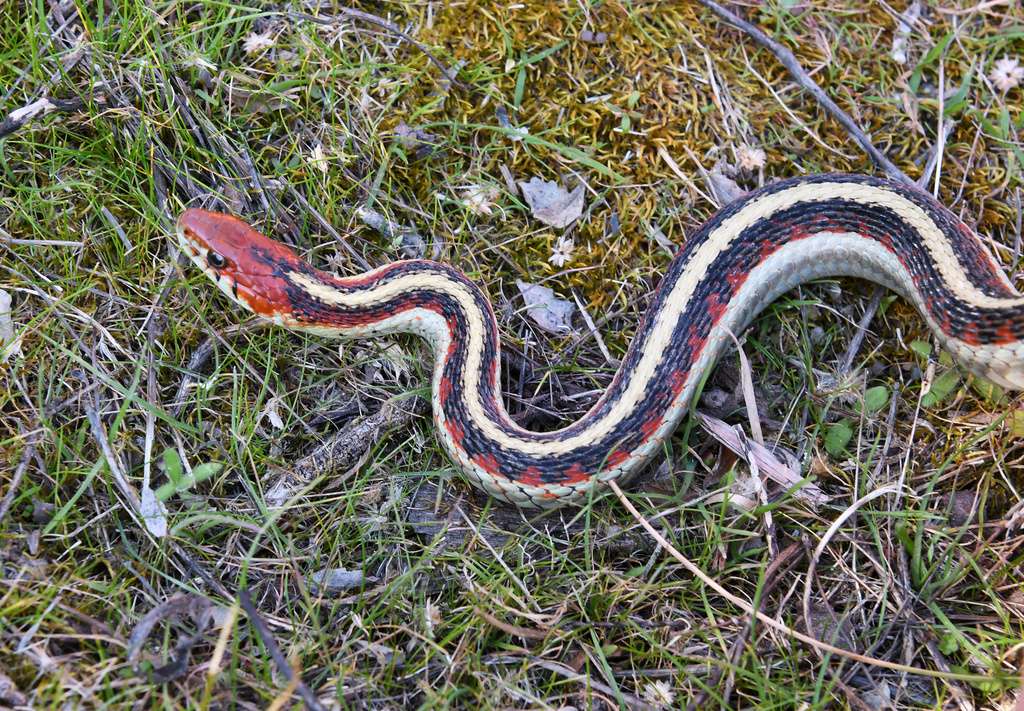
Description:
Scientific name: Thamnophis sirtalis
Life span: More than 20 years
The red-sided garter snake has a 130 cm maximum length. It has red bars between the yellow stripes on the sides and is black with yellow stripes. There are various anal scales. They are often much smaller in Colorado. Between their lighter stripes, they feature red patches.
Native Region/Habitat
The garter snake is one of North America’s most common and widely dispersed snakes. The red-sided garter snake is only known to exist in the Fort Smith region of the NWT. Garter snakes can be seen in marshy places in the summer when chorus and wood frogs are in great numbers. The distance between hibernation places and summer habitats is frequently great. Because of this, the snakes must travel fare each spring and fall.

Behavior:
Unlike many other pet snakes, such as Ball Pythons, which spend most of the day in their hide boxes, Red Sided Garter Snakes are active snakes that spend a lot of time outside of their hide boxes and make excellent show snakes. For those seeking a smaller-sized, non-eating-mice snake as a pet, Red Sided Garter Snakes make wonderful companions. They are also very easy to care for.
Care As a pet/In captivity:
Housing: They can be kept in glass terrariums, wooden cages with sliding glass doors, or clear plastic tubs. Due to their little size, Red Sided Garter Snakes require small cages. A single adult female can be kept in a cage measuring 60 cm by 30 cm by 30 cm, while adult males can be kept in cages that are somewhat smaller. The cage must be impenetrable and secure. Provide a hide box and a water bowl in addition to using coconut husk as the substrate. To prevent scale rot in your Red Sided Garter Snake, always keep the substrate dry.
Heating: In most South African houses, the summertime room temperature ranges from 25 to 28 degrees, and Red Sided Garter Snakes only require additional heat during the colder months. You can create a hot zone in your cages by placing a heat pad under one-half of the cage. These snakes are fairly temperature resistant and not picky about heating.
Feeding: In captivity, you can feed them small fish like guppies, fish fillets, earthworms (green worms from your garden, not red worms from the bait shop), and even canned cat food. They will occasionally consume mice that have been sprayed with fish scent. My pet mice are fed a diet of frozen/thawed pinky or fuzzy mice and frozen/thawed lance fish. Due to their high metabolic rates, you should feed these snakes at least twice a week, and you should feed them more often if you solely give them earthworms.
Table





